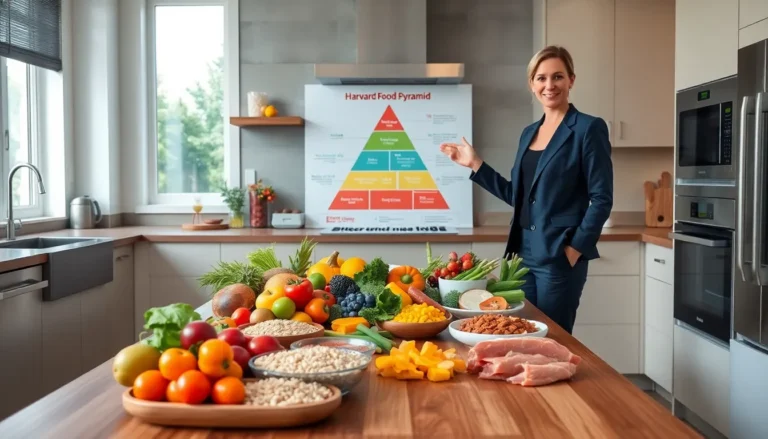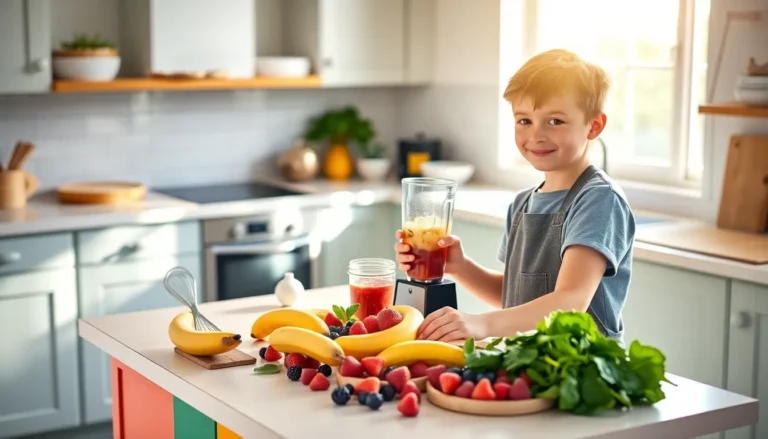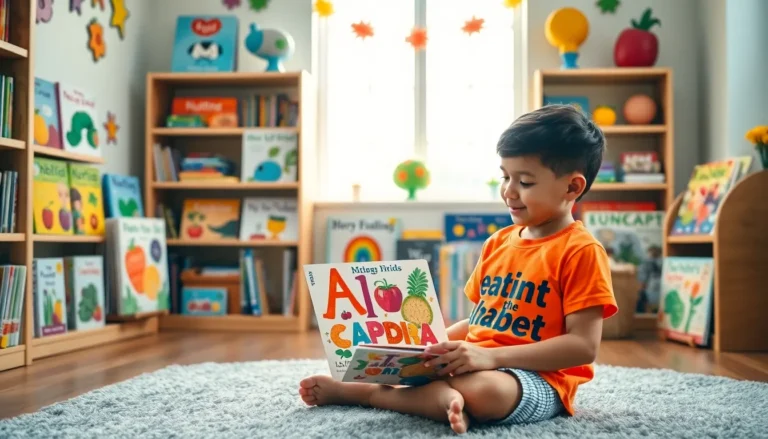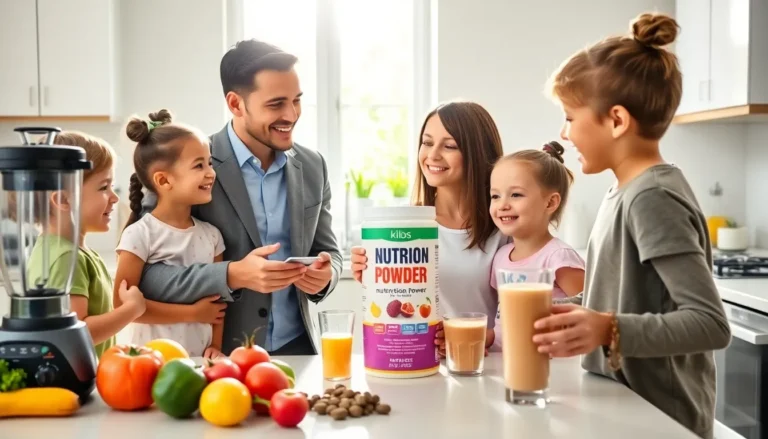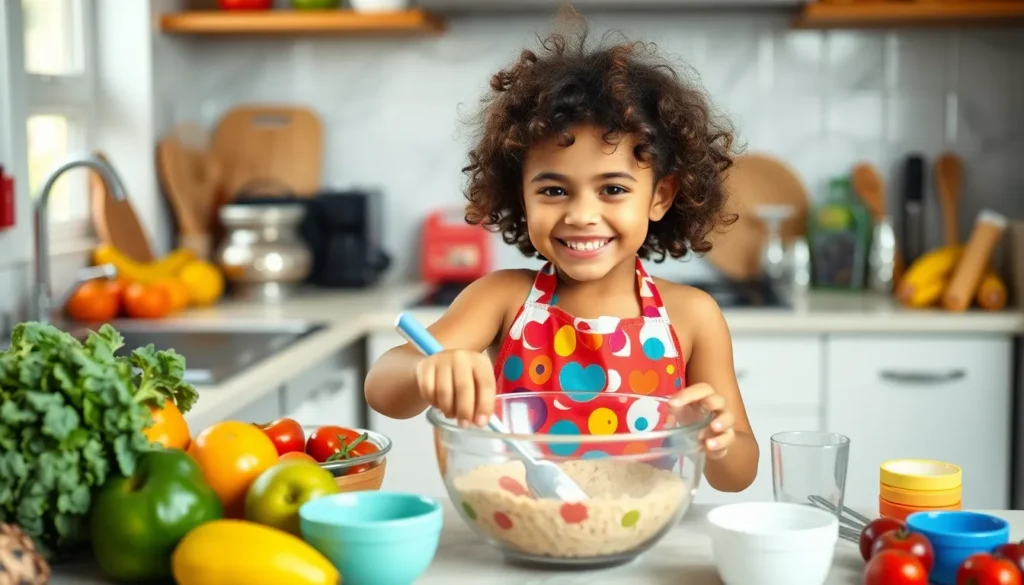Table of Contents
ToggleCooking isn’t just for grown-ups anymore. It’s time to hand over the spatula and let kids unleash their inner chefs! Hands-on cooking for kids not only fills tummies but also sparks creativity and builds essential skills. Imagine the joy of watching a child transform simple ingredients into a culinary masterpiece—or at least a slightly lopsided pancake!
Benefits of Hands-On Cooking for Kids
Hands-on cooking offers numerous advantages for children’s development. Engaging in cooking activities provides a fun way for kids to learn valuable life skills.
Enhancing Motor Skills
Hands-on cooking activities significantly enhance children’s motor skills. Measuring ingredients helps develop fine motor coordination. Stirring, pouring, and chopping improve hand-eye coordination and strength. Every action, from kneading dough to rolling out pastry, contributes to muscle development. Children gain confidence as they master these tasks. Enhanced motor skills positively impact their daily activities, including writing and playing sports.
Encouraging Healthy Eating Habits
Involvement in cooking encourages children to adopt healthier eating habits. Children become more aware of ingredients when they participate in meal preparation. By choosing vegetables and fruits, they learn to appreciate nutritious foods. Cooking also sparks curiosity about different tastes and cuisines. When kids help prepare meals, they’re more likely to try new foods. This positive exposure fosters a lifelong love for healthy eating, promoting better overall health.
Engaging Recipes for Young Chefs
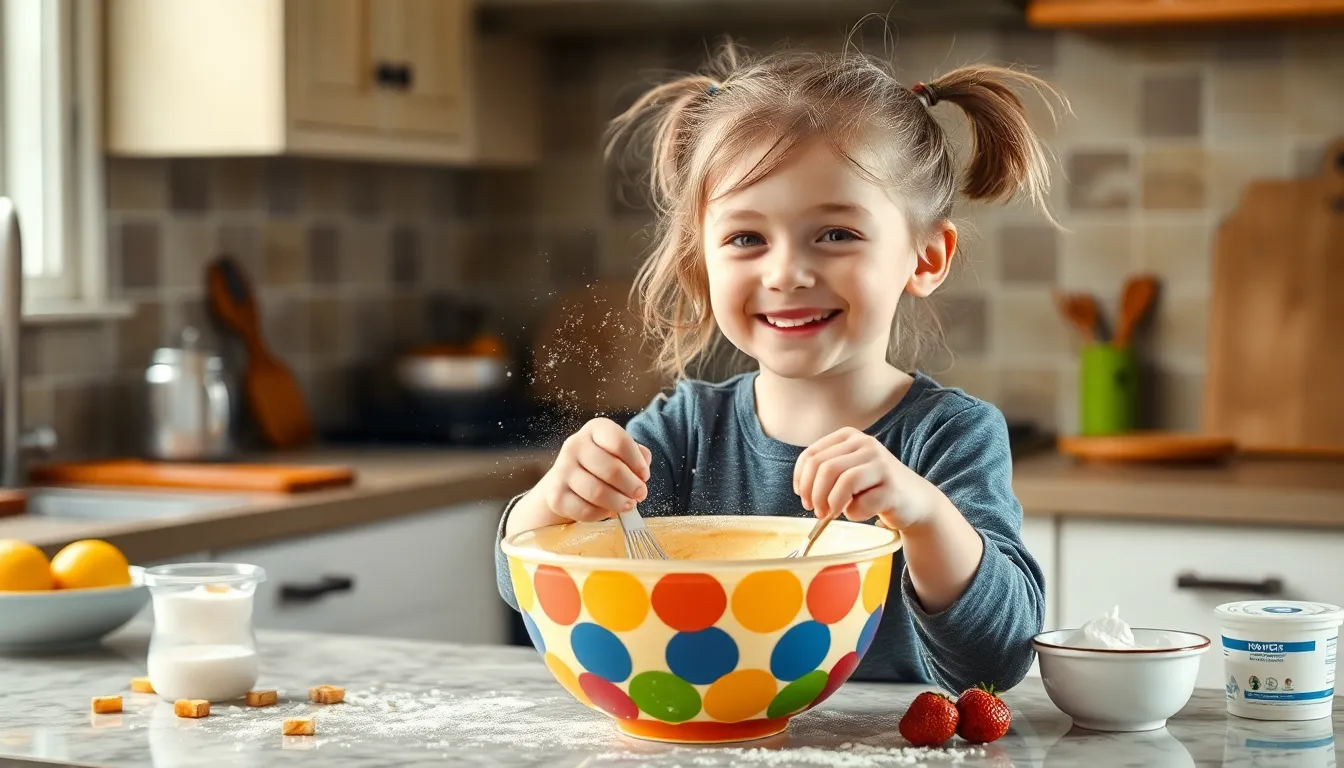
Cooking offers numerous opportunities for kids to experiment and enjoy creating delicious meals. Here are engaging recipes tailored for young chefs.
Simple Breakfast Ideas
Pancakes make a great start to the day. Young chefs can measure flour, mix batter, and flip pancakes, enhancing motor skills and confidence. Smoothies offer another fun option. By combining fruits and yogurt, kids learn about nutrition while crafting tasty drinks. Oatmeal is a healthy choice, too. Children may personalize it with toppings like fruits, honey, or nuts, fostering creativity.
Fun Lunch Options
Wraps are easy for kids to assemble. They can spread cream cheese on tortillas and add veggies, making a colorful meal. Homemade pizzas allow kids to choose their ingredients, promoting decision-making. Sandwiches also provide a chance for creativity, as they can layer their favorite items. Salads encourage exploration of flavors. Children can mix greens, fruits, nuts, and dressings for a nutritious, hands-on experience.
Safety Tips in the Kitchen
Cooking with kids is enjoyable, but safety remains a top concern. Following specific guidelines ensures that young chefs have a safe kitchen experience.
Age-Appropriate Tasks
Assign age-appropriate tasks to children. Younger kids can wash fruits and vegetables. They may also mix ingredients in a bowl. Older children can handle tasks like measuring and stirring. Teens might safely use knives and operate small appliances. Each age group should engage with tools suited to their abilities. Ensuring safety while learning boosts confidence in their skills. Assessing each child’s comfort level is vital before assigning responsibilities. Encouraging them to take ownership of their tasks fosters creativity and independence.
Proper Supervision
Maintaining proper supervision is crucial in the kitchen. Adults should always be present during cooking sessions. Closely observing children helps prevent accidents with knives or hot surfaces. Setting clear boundaries regarding what is off-limits promotes a safe environment. Encourage kids to ask questions if unsure about something. Providing gentle reminders about safety rules reinforces good habits. Actively participating in the cooking process allows for hands-on guidance. Engaging with children while cooking creates a more enjoyable and secure experience. Prioritizing supervision builds a strong foundation for safe cooking practices.
Tools and Equipment
Hands-on cooking requires the right tools and equipment to ensure a fun and safe experience for kids. Proper tools enhance their ability to engage with cooking tasks effectively.
Essential Kitchen Tools for Kids
Child-sized utensils make cooking easier and more enjoyable for children. Look for colorful measuring cups and spoons that encourage exploration. Non-slip cutting boards provide stability while they chop ingredients. Use safe, easy-to-handle kitchen knives designed specifically for young chefs. Silicone spatulas help with mixing and scraping, minimizing mess. Additionally, small bowls aid in organizing ingredients, fostering a tidy work area. Investing in these essential tools ensures children develop valuable skills while encouraging creativity in the kitchen.
Cleaning and Organization Tips
Cleaning up after cooking teaches kids responsibility. Start by designating specific areas for prep and cooking to maintain order. Use aprons to minimize spills and protect clothing during food preparation. Encourage children to clean as they go, washing utensils and bowls after use. Sturdy storage containers are perfect for holding prepped ingredients, keeping the workspace organized. Make it a game by timing how quickly they can tidy up. Regularly involving kids in clean-up routines establishes good habits and ensures the kitchen stays organized for future culinary adventures.
Hands-on cooking for kids opens a world of creativity and learning. It’s a chance for children to explore flavors while developing essential life skills. By engaging in the cooking process, they not only gain confidence but also cultivate a deeper understanding of nutrition and healthy eating habits.
The joy of creating meals together fosters family bonding and encourages children to appreciate the effort behind each dish. With the right tools and safety measures in place, cooking becomes a fun and educational experience. Embracing this hands-on approach can lead to a lifetime of culinary enjoyment and healthy choices.

